Indian SARS-CoV-2 Genomics Consortium (INSACOG)
Syllabus:Science
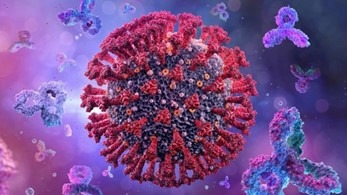
Latest News:
- India has detected one case of the newly emerging COVID-19 variant NB.1.8.1 and four cases of the LF.7 variant, as reported by the Indian SARS-CoV-2 Genomics Consortium (INSACOG).
About INSACOG:
- The Indian SARS-CoV-2 Genomics Consortium (INSACOG) was established in December 2020 by the Government of India. It is a collaborative initiative involving the Ministry of Health and Family Welfare, the Department of Biotechnology (DBT), the Council for Scientific & Industrial Research (CSIR), and the Indian Council of Medical Research (ICMR).
Structure & Function:
- Comprises a network of 54 laboratories across India.
- Conducts genomic surveillance of SARS-CoV-2 through sentinel sequencing, coordinated by the National Centre for Disease Control (NCDC) in Delhi.
- Integrated with the Central Surveillance Unit (CSU) under the Integrated Disease Surveillance Programme (IDSP).
Evolving Mandate:
- Initially focused on tracking variants among international travellers, INSACOG now emphasizes early detection of variants emerging within India and monitoring unusual epidemiological trends.
Key Objectives:
- Early identification of SARS-CoV-2 variants of public health concern through nationwide genomic surveillance.
- Detection of variants in special scenarios such as vaccine breakthrough infections, super spreader events, and areas with high morbidity or mortality.
- Integration of genomic data with epidemiological insights.
- Recommending public health interventions based on surveillance findings.
Significance:
- INSACOG’s work helps to uncover links between emerging variants and outbreaks, guiding strategies to interrupt transmission chains and strengthen the nation’s public health response.
With reference to the Indian SARS-CoV-2 Genomics Consortium (INSACOG), consider the following statements:
- INSACOG was jointly established by the Ministry of Health and Family Welfare and the Indian Council of Medical Research to study the immunological response of COVID-19 vaccines in high-risk populations.
- It functions under the coordination of the Central Surveillance Unit (CSU) of the Integrated Disease Surveillance Programme (IDSP) and focuses exclusively on variants found in international travellers.
- One of the key mandates of INSACOG is to integrate genomic surveillance data with epidemiological trends to inform public health interventions.
- INSACOG includes over 50 laboratories across India and utilizes sentinel surveillance as part of its genomic monitoring strategy.
Which of the statements given above are correct?
A) 1 and 2 only
B) 3 and 4 only
C) 1, 3 and 4 only
D) 2, 3 and 4 only
Answer: B) 3 and 4 only
Explanation:
- Statement 1 is incorrect: INSACOG was established not to study vaccine immunology but to monitor genomic variations in SARS-CoV-2. It was initiated by the Ministry of Health along with DBT, CSIR, and ICMR.
- Statement 2 is incorrect: Although it initially focused on international travellers, its mandate has evolved to include domestic variant detection and integration with epidemiological trends.
- Statement 3 is correct: INSACOG does integrate genomic data with epidemiological surveillance to guide public health actions.
- Statement 4 is correct: INSACOG comprises 54 laboratories and uses sentinel surveillance for tracking genomic variants.
Orans
Syllabus:Polity
- The Rajasthan government has begun the formal process of classifying Oran lands—community-managed sacred groves—as forests, in compliance with the Supreme Court’s landmark judgment on December 18, 2024.
- This decision comes under the purview of the Forest Conservation Act, 1980, aiming to strengthen the legal protection of these ecologically and culturally significant landscapes.
About Orans:
- Definition: Orans are traditional sacred groves preserved by rural communities in Rajasthan, often dedicated to local deities and associated with socio-religious practices.
- Ecological Significance: They serve as biodiversity hotspots and support critical ecological functions such as:
- Livelihood support through grazing and forest produce.
- Water conservation via features like talabs (ponds), nadis (small ponds), open wells, and seasonal streams.
- Cultural Role: Annual religious festivals and fairs are organized in these groves, reinforcing community stewardship.
- Extent: Rajasthan houses approximately 25,000 orans spread across 6 lakh hectares. Some, like the Bhadariya Mata Oran in Jaisalmer, span over 17,000 hectares.
- Conservation Value: Orans are vital habitats for endangered species, notably the Great Indian Bustard (GIB)—India’s most critically endangered bird and the state bird of Rajasthan.
Policy and Legal Developments:
- The Rajasthan Forest Policy 2023 classified orans merely as general community lands, which provided limited conservation safeguards.
- The Supreme Court’s 2024 judgment recognized orans as forests under the Forest Conservation Act, enhancing their legal protection against encroachment and ecological degradation.
With reference to the traditional ‘Orans’ of Rajasthan, consider the following statements:
- Orans are recognized under the Wildlife Protection Act, 1972, as Community Reserves notified by State governments.
- The Supreme Court’s judgment in December 2024 mandated their classification as forests under the Forest Conservation Act, 1980.
- Orans have no role in the hydrological cycle, as they are primarily cultural and religious spaces.
- The Great Indian Bustard, a critically endangered bird species, is found exclusively in protected national parks and not in community lands like Orans.
Which of the statements given above is/are correct?
A) 1 and 2 only
B) 2 only
C) 2 and 3 only
D) 1, 3, and 4 only
Answer: B) 2 only
Explanation:
- Statement 1: Incorrect – Orans are not uniformly notified as Community Reserves under the Wildlife Protection Act, though some may qualify. They are traditionally protected community lands.
- Statement 2: Correct – The Supreme Court, in December 2024, recognized Orans as forests under the Forest Conservation Act, 1980.
- Statement 3: Incorrect – Orans often contain vital water bodies (e.g., Talab, Nadi) and play a significant role in the hydrological cycle and local ecology.
- Statement 4: Incorrect – The Great Indian Bustard is indeed found in Orans, which are vital habitats outside formal protected areas.
Tianwen-2 Mission
Syllabus:Defence
- China is preparing to launch Tianwen-2, a landmark asteroid exploration mission aimed at advancing its deep-space capabilities and scientific understanding of near-Earth objects.
Mission Overview
- Agency: China National Space Administration (CNSA)
- Launch Vehicle: Long March 3B
- Launch Site: Xichang Satellite Launch Centre, Sichuan Province
- Mission Objective: To survey and return samples from near-Earth asteroid 469219 Kamo‘oalewa, followed by a secondary mission to the main asteroid belt to study comet 311P/PANSTARRS.
Asteroid 469219 Kamo‘oalewa
- Discovered in 2016 by the Pan-STARRS 1 telescope (Haleakalā Observatory, Hawaii).
- Classified as a quasi-satellite of Earth: although it orbits the Sun, it remains gravitationally influenced by Earth.
- Exhibits an elliptical solar orbit that makes it appear to alternate between leading and trailing Earth.
- Estimated to have occupied its current orbital configuration for ~100 years, and may persist for another ~300 years—though such orbits are inherently unstable.
Sampling Strategy
- Employs a “touch-and-go” technique for sample retrieval:
- Spacecraft descends briefly to the asteroid surface.
- A burst of gas or a small projectile dislodges surface particles, which are collected in a sample capsule.
- A backup method, termed “anchor-and-attach”, involves robotic arms drilling into the asteroid to extract subsurface material.
The Tianwen Series
- Tianwen-1 (2020): China’s first interplanetary mission, successfully deploying an orbiter, lander, and rover on Mars. The rover operated until 2022.
- Tianwen-2: Targeting asteroid and comet studies with a sample return component.
- Tianwen-3 (Projected: 2028): Aimed at returning samples from Mars, potentially making China the second country after the USA to achieve this feat.
With reference to China’s upcoming Tianwen-2 Mission, consider the following statements:
- The mission targets both a near-Earth asteroid and a trans-Neptunian object for exploration and sample collection.
- Kamo‘oalewa, the asteroid targeted by Tianwen-2, is unique due to its classification as a quasi-satellite of Earth, meaning it temporarily orbits Earth before moving into heliocentric orbit.
- Tianwen-2 will employ both “touch-and-go” and “anchor-and-attach” techniques to extract surface and subsurface material from the asteroid.
- The Tianwen series marks the first time China has undertaken sample return missions beyond Earth’s orbit.
Which of the above statements is/are correct?
A) and 2 only
B) 2 and 3 only
C) 3 and 4 only
D) 1, 3 and 4 only
Answer: B) 2 and 3 only
Explanation:
- Statement 1: Incorrect – Tianwen-2 will study a near-Earth asteroid (Kamo‘oalewa) and a comet in the main asteroid belt (311P/PANSTARRS), not a trans-Neptunian object.
- Statement 2: Correct – Kamo‘oalewa is classified as a quasi-satellite; it orbits the Sun but stays gravitationally close to Earth. It does not orbit Earth directly.
- Statement 3: Correct – Both the “touch-and-go” and a backup “anchor-and-attach” method are planned for sampling.
- Statement 4: Incorrect – China has already carried out a planetary mission with Tianwen-1 to Mars, but Tianwen-2 will be its first interplanetary sample return mission, not the first beyond Earth’s orbit generally.
NITI Aayog
Syllabus:Polity
- The 10th Governing Council Meeting of NITI Aayog was recently convened in New Delhi, chaired by the Prime Minister of India, under the overarching theme “Viksit Rajya for Viksit Bharat @2047”, envisioning a developed India by its centenary year of independence.
About NITI Aayog
- Establishment: Constituted in January 2015 via a Union Cabinet resolution, replacing the erstwhile Planning Commission.
- Nature: It is neither a Constitutional nor a Statutory body; it was formed through executive action, not by law or constitutional amendment.
- Role: Serves as the premier policy think tank of the Government of India.
Twin Mandate
- Oversee the implementation and monitoring of Sustainable Development Goals (SDGs) across India.
- Promote competitive and cooperative federalism by actively involving States and Union Territories in the national development process.
Organisational Structure
- Chairperson: Prime Minister of India
- Governing Council:
- Comprises Chief Ministers of all States and UTs with legislatures.
- Lieutenant Governors of other UTs.
- Up to four Union Ministers as ex-officio members, nominated by the Prime Minister.
- Vice-Chairperson: Appointed by the Prime Minister.
- Full-time members and special invitees (domain experts) as nominated by the Prime Minister.
Regional Councils:
- Constituted for fixed terms to address specific regional concerns.
- Convened by the Prime Minister, involving Chief Ministers and Lt. Governors of relevant States/UTs.
CEO of NITI Aayog:
- Appointed by the Prime Minister for a fixed tenure.
- Holds the rank of Secretary to the Government of India.
Key Objectives
- Inclusive Planning: Emphasis on development at the village level, with special attention to marginalized and vulnerable populations.
- Security-Integrated Policy: Incorporate national security concerns into economic planning and policy formulation.
- Innovation Ecosystem: Foster a knowledge-driven, innovation-friendly, and entrepreneurial environment conducive to long-term development.
- Inter-sectoral Coordination: Serve as a platform for resolving issues that cut across different ministries and sectors, facilitating smoother policy execution.
Which of the following statements about NITI Aayog is/are correct?
- NITI Aayog is a constitutional body established through an act of Parliament.
- Its Governing Council includes Chief Ministers of all States and Union Territories with legislatures.
- The Vice-Chairperson of NITI Aayog is appointed by the Prime Minister.
- NITI Aayog is responsible for the implementation of the Sustainable Development Goals (SDGs) in India.
Select the correct answer:
A) 2, 3 and 4 only
B) 1 and 4 only
C) 2 and 3 only
D) 1, 2 and 4 only
Answer:B
Explanation: The Planning Commission was also an executive body, but the question demands distinguishing features. NITI Aayog is explicitly non-constitutional and non-statutory, created via executive order.
Debt Recovery Tribunals (DRTs)
Syllabus:Polity
- The Department of Financial Services (DFS), under the Ministry of Finance, recently organised a colloquium in New Delhi. It convened Chairpersons of Debt Recovery Appellate Tribunals (DRATs) and Presiding Officers of Debt Recovery Tribunals (DRTs) to discuss issues related to debt recovery.
Debt Recovery Tribunals (DRTs)
- Nature & Establishment: DRTs are quasi-judicial bodies constituted under the Recovery of Debts Due to Banks and Financial Institutions Act, 1993.
- Primary Role: They adjudicate disputes related to debt recovery by banks and financial institutions, specifically handling loan defaults above ₹20 lakh focused on secured debts.
- Other Functions: DRTs also hear Securitisation Applications (SAs) filed under the SARFAESI Act, 2002 by borrowers or aggrieved parties.
- Presence: Currently, 39 DRTs operate across India, each led by a Presiding Officer.
Structure and Powers of DRTs
- Presiding Officer: Typically a judicial officer eligible to be appointed as a District Judge.
- Additional Members: Administrative and technical members may be appointed by the Central Government.
- Powers (Section 22(2), Recovery of Debts Act): DRTs can summon and examine witnesses, compel document production, accept evidence on affidavits, review or dismiss applications, conduct ex parte proceedings, and issue commissions for document and witness examination.
- Jurisdiction: Territorial jurisdiction defined by the Central Government, limited to debt recovery cases involving banks and financial institutions.
Debt Recovery Appellate Tribunals (DRATs)
- Role: DRATs serve as appellate bodies reviewing decisions of DRTs.
- Appeals: Aggrieved parties can file appeals against DRT rulings before DRATs.
- Presence: There are currently 5 DRATs in India, each led by a Chairperson.
- Significance: DRATs provide judicial oversight, ensure consistency in debt recovery rulings, and clarify complex legal issues related to recovery disputes.
Consider the following statements about Debt Recovery Tribunals (DRTs) and Debt Recovery Appellate Tribunals (DRATs):
- Debt Recovery Tribunals were established under the SARFAESI Act, 2002, to expedite the resolution of secured loan defaults exceeding ₹20 lakh.
- DRTs have the power to conduct ex parte proceedings and issue commissions for the examination of documents and witnesses under the Recovery of Debts Due to Banks and Financial Institutions Act, 1993.
- Debt Recovery Appellate Tribunals (DRATs) serve as the first appellate authority against the orders of DRTs and are chaired by judicial officers appointed by the Chief Justice of India.
- The territorial jurisdiction of each DRT is determined by the Central Government and is limited strictly to cases involving banks and financial institutions.
Which of the above statements is/are correct?
A) 2 and 4 only
B) 1, 2 and 4 only
C) 2, 3 and 4 only
D) 1 and 3 only
Answer: A) 2 and 4 only
Explanation:
- Statement 1:DRTs were established under the Recovery of Debts Due to Banks and Financial Institutions Act, 1993, not under the SARFAESI Act, 2002. SARFAESI Act allows DRTs to hear securitisation applications but does not establish them.
- Statement 2:Under Section 22(2) of the Recovery of Debts Act, DRTs possess powers including conducting ex parte proceedings and issuing commissions for witness and document examination.
- Statement 3:DRATs are appellate bodies reviewing DRTs’ decisions but their Chairpersons are not appointed by the Chief Justice of India; rather, the appointment is made by the Central Government, often from judicial officers.
- Statement 4:The territorial jurisdiction of DRTs is indeed defined by the Central Government and strictly pertains to debt recovery cases involving banks and financial institutions
Great Indian Bustard (GIB)
Syllabus:Ecology
- Scientific Name: Ardeotis nigriceps
- Endemism: Restricted to the Indian subcontinent.
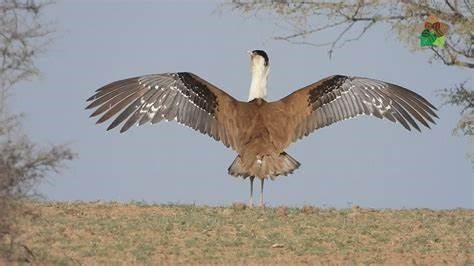
Habitat & Distribution
- Prefers arid and semi-arid grasslands and scrublands—ecosystems under increasing threat from agriculture, infrastructure, and industrial development.
- The core population (~100 individuals) is confined to the Thar Desert, particularly in Jaisalmer and Barmer districts of Rajasthan.
- The total estimated population in India ranges between 100 and 150 individuals, making it one of the rarest birds in the world.
Physical Characteristics
- Among the heaviest flying birds, adults can weigh up to 15 kg (33 pounds).
Distinctive traits:
- Black crown on the forehead
- Pale head and neck
- Brownish body with grey and black wing patterns
- Resembles an ostrich in general body form with long bare legs and a horizontal stance.
- Both males and females appear similar in size and morphology.
- Lifespan: Approximately 12 to 15 years in the wild.
- Reproduction and Diet
- Breeding Season: Occurs during the monsoon, with females laying a single egg directly on the bare ground, making nests extremely vulnerable to predation and accidental destruction.
Feeding Behaviour: Omnivorous and opportunistic:
- Grass seeds, berries
- Insects (e.g., grasshoppers, beetles)
- Occasionally small reptiles and rodents
- Conservation Status
- IUCN Red List: Critically Endangered
- Wildlife (Protection) Act, 1972: Schedule I – Provides the highest legal protection under Indian law.
- CITES: Appendix I – Prohibits international trade in specimens, recognizing the species as threatened with extinction.
- This bird, once widespread across the Indian subcontinent, is now teetering on the brink of extinction. Conservation efforts, including community engagement models like the one Bishnoi championed, are vital for the species’ survival.
With reference to the Great Indian Bustard (GIB), consider the following statements:
- It is endemic to the Indian subcontinent and prefers wetland and forested ecosystems.
- It is one of the heaviest flying birds in the world.
- The nesting behavior of the species increases its vulnerability to natural and anthropogenic threats.
- Its current core population is largely confined to Rajasthan’s Thar Desert.
Which of the above statements are correct?
A) 2, 3 and 4 only
B) 1 and 2 only
C) 1, 3 and 4 only
D) 2 and 4 only
Answer: A) 2, 3 and 4 only
Explanation:
- Statement 1 is incorrect: GIB inhabits arid and semi-arid grasslands, not wetlands or forests.
- Statements 2, 3, and 4 are correct: It is a heavy flying bird, lays eggs directly on the ground (high vulnerability), and is mostly found in Rajasthan’s Thar Desert.
South Korea
Syllabus:Geography
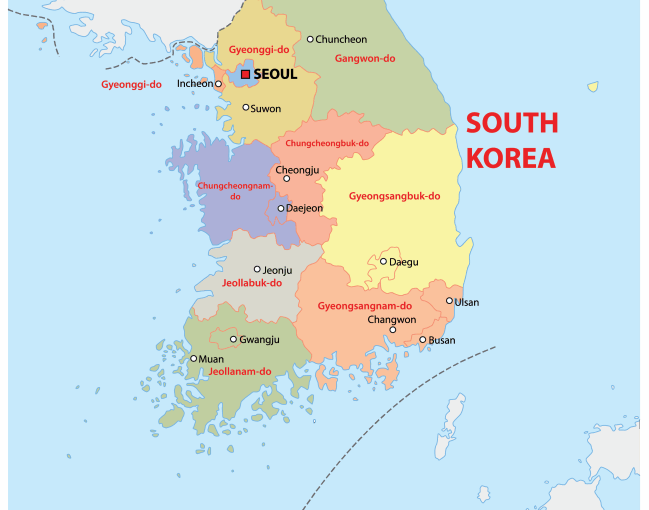
Context:
- South Korea has formally conveyed its concerns to China regarding the recent unilateral establishment of a “No-Sail Zone” in the Yellow Sea—a geopolitically sensitive maritime region where the Exclusive Economic Zones (EEZs) of both nations intersect.
Geographical Overview of South Korea:
- Location: Situated in East Asia, South Korea shares a land border with North Korea (Democratic People’s Republic of Korea) to the north. It is bounded by:
- The Yellow Sea to the west,
- The East China Sea to the south,
- The East Sea (Sea of Japan) to the east.
- Political Division: The Korean Peninsula is divided at the 38th Parallel, which marks the Demilitarized Zone (DMZ) separating North and South Korea.
- Capital City: Seoul
- Major Rivers:
- Han River
- Nakdong River
- Significant Islands:
- Jeju Island (the largest island), located in the Korea Strait, is of volcanic origin.
- Mountain Ranges:
- The Taebaek Mountain Range runs along the eastern coastline.
- Highest Peak:
- Mount Halla (1,950 meters), an extinct volcano on Jeju Island.
Geopolitical and Legal Implications:
Strategic Importance of the Yellow Sea:
- The Yellow Sea, lying between China and the Korean Peninsula, holds significant geopolitical and economic value. It is crucial for:
- Regional maritime security,
- Commercial navigation,
- Fisheries and marine biodiversity.
Legal Concerns Under UNCLOS:
- South Korea’s Ministry of Foreign Affairs is evaluating the legality of China’s no-sail declaration in accordance with the United Nations Convention on the Law of the Sea (UNCLOS). Key articles being examined include:
- Article 58: Rights and duties of other States in the EEZ (including navigation and overflight).
- Article 74: Delimitation of EEZs between states with opposite or adjacent coasts.
- Article 87: Freedom of the high seas, including freedom of navigation.
- South Korea asserts that unilaterally imposed maritime restrictions in overlapping EEZs must comply with international law and must not hinder freedom of navigation or other lawful uses of the sea.
With reference to recent geopolitical developments in East Asia, consider the following statements:
- The Yellow Sea, where South Korea raised concerns about a newly declared “No-Sail Zone,” lies entirely within China’s territorial waters.
- Under the United Nations Convention on the Law of the Sea (UNCLOS), a coastal state cannot restrict freedom of navigation within its Exclusive Economic Zone (EEZ) except for enforcement of customs, fiscal, immigration, or sanitary laws.
- The Demilitarized Zone (DMZ) between North and South Korea lies along the 38th Parallel, but it is not recognized under international treaties as a de jure international boundary.
- Mount Halla, South Korea’s highest peak, is a stratovolcano located in the Taebaek Mountain range.
Which of the above statements is/are correct?
A) 2 only
B) 2 and 3 only
C) 1, 3 and 4 only
D) 1 and 4 only
Answer: B) 2 and 3 only
Explanation:
- Statement 1: Incorrect:The Yellow Sea is a semi-enclosed sea bordered by both China and South Korea, and includes overlapping Exclusive Economic Zones (EEZs). It is not entirely within China’s territorial waters.
- Statement 2: Correct:According to UNCLOS Articles 58 and 87, freedom of navigation and overflight is preserved in EEZs. Coastal states can only restrict this under specific circumstances related to customs, fiscal, immigration, or sanitary regulations within their territorial waters, not EEZs without due cause.
- Statement 3: Correct:The DMZ is a de facto boundary established by the Korean Armistice Agreement (1953), not through an international treaty formally recognizing it as an international boundary. Hence, it lacks full de jure status.
- Statement 4: Incorrect:Mount Halla is an extinct volcano located on Jeju Island, not part of the Taebaek Range, which lies on the mainland along the eastern coast.
Nagshankar Temple
Syllabus:History
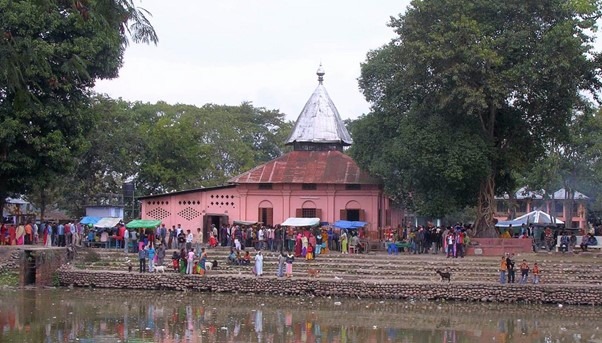
Location:
- Nagshankar Temple is a historic Hindu shrine dedicated to Lord Shiva, located in the Biswanath district of northeastern Assam. It lies on the northern bank of the Brahmaputra River.
Historical Significance:
- Believed to have been originally constructed in the 4th century CE by King Narasankar of the Nagakha dynasty.
- The temple underwent major restoration in 1480 CE under the Ahom ruler Su-sen-pha, reflecting its continued cultural relevance across centuries.
Ecological Importance:
- The temple complex features a large pond that serves as a habitat for 250–300 turtles, many of which belong to some of the rarest and most endangered species
Notable species include:
- Black Softshell Turtle (Nilssonia nigricans) – Critically Endangered
- Indian Softshell Turtle (Nilssonia gangetica)
- Malayan Softshell Turtle (Dogania subplana)
- Several turtles in the pond are believed to be centuries old, underlining the site’s unique ecological heritage.
Biodiversity Beyond Turtles:
- The temple campus also shelters a variety of other animals including peacocks, deer, and pythons, making it a significant center for biodiversity conservation within a cultural setting.
Conservation Recognition:
- Due to its exceptional role in preserving critically endangered turtle species within a religious and community-supported framework, Nagshankar Temple has recently been designated as a model temple for turtle conservation.
Consider the following statements regarding the Nagshankar Temple in Assam:
- It was originally constructed by an Ahom ruler in the 4th century CE.
- The temple is dedicated to Lord Vishnu and is situated on the southern bank of the Brahmaputra River.
- It has been recognized for its role in the conservation of critically endangered turtle species.
Which of the statements given above is/are correct?
A) 1 and 2 only
B) 3 only
C) 2 and 3 only
D) 1 and 3 only
Answer: B) 3 only
Explanation:
- Statement 1 is incorrect – The original construction is attributed to King Narasankar of Nagakha in the 4th century CE, not an Ahom ruler.
- Statement 2 is incorrect – The temple is dedicated to Lord Shiva and is located on the northern bank of the Brahmaputra.
- Statement 3 is correct – It is recognized for turtle conservation.
New Development Bank (NDB)
Syllabus:Economy
- Algeria has officially become a member of the New Development Bank (NDB), the multilateral institution backed by BRICS nations, marking a strategic extension of the Bank’s reach into North Africa.
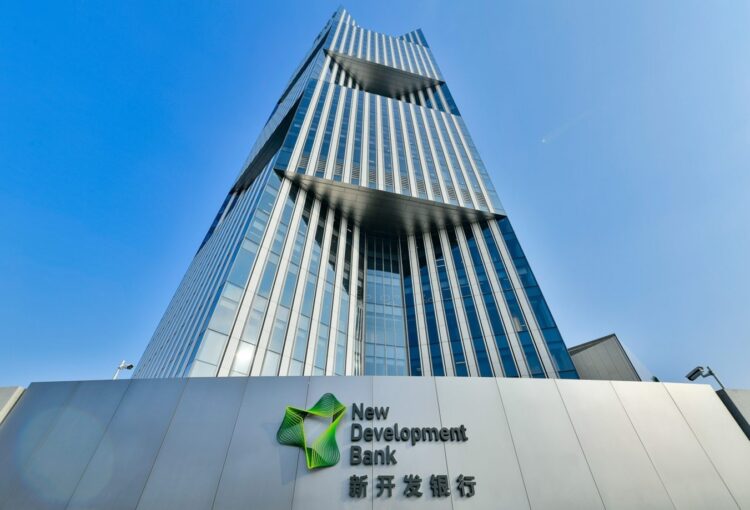
About the New Development Bank (NDB)
Origin & Establishment:
- Initially conceptualized in 2012 during the BRICS Summit in New Delhi.
- The formal agreement for setting up the bank was signed on July 15, 2014, at the Fortaleza Summit (Brazil).
- The bank officially commenced operations on July 21, 2015.
Objective:
- To mobilize resources for infrastructure and sustainable development in BRICS nations and other emerging and developing economies.
- Headquarters & Presence:
- Headquartered in Shanghai, China.
- Regional offices are established in South Africa and Brazil, with expanding outreach.
Membership and Capital Structure
- Open Membership:
- Membership is open to any member state of the United Nations.
- Capital Base:
- Authorized Capital: USD 100 billion.
- Initial Subscribed Capital: USD 50 billion, equally shared among the five founding members – Brazil, Russia, India, China, and South Africa.
- Voting Rights:
- Each founding member enjoys equal voting power, unlike the asymmetrical shareholding seen in institutions like the World Bank or Asian Development Bank (ADB).
Governance Structure
- Board of Governors:Comprised of the finance ministers of the five founding BRICS countries.
- Board of Directors:Oversees project approvals and strategic direction.
- Leadership Rotation:The positions of President and Vice-President are rotated among the founding BRICS nations.
With reference to the New Development Bank (NDB), consider the following statements:
- The idea of establishing the NDB was first proposed at the BRICS Summit held in Fortaleza, Brazil in 2014.
- Unlike the World Bank, the NDB ensures equal voting power among its founding members.
- The headquarters of the NDB is located in Johannesburg, South Africa.
- The New Development Bank provides financial assistance only to BRICS countries.
Which of the above statements is/are correct?
A) 2 only
B) 1 and 2 only
C) 1, 2 and 3 only
D) 2 and 4 only
Answer: A) 2 only
Explanation:
- Statement 1 is incorrect: The idea was first proposed in the 2012 BRICS Summit in New Delhi, not in Fortaleza.
- Statement 2 is correct: All founding members have equal voting rights.
- Statement 3 is incorrect: The headquarters is in Shanghai, China, not Johannesburg.
- Statement 4 is incorrect: NDB extends support to all developing and emerging economies, not just BRICS.
